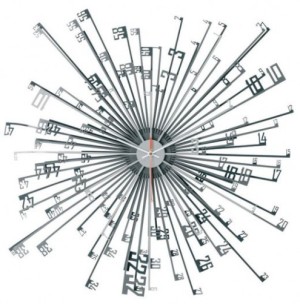How long does it take to peel a banana?
You think you know, don’t you!!!!!
Maybe you’re holding a banana plus the twins in your arms, one is puking, the other one is pooping (these are the twins, not the banana), and your husband, standing safely away from the six of you (wife, twins, banana, puke, poop), is telling you about his massage therapist. You won’t peel the banana; you’ll strangle it.
Bride and groom at a German wedding. The tradition is to tie the two of them together back to back, stuff a banana in the groom’s pants, and hang the couple (and the banana) upside down from the ceiling in a barn in Westphalia, with cow dung piled deep underneath the couple so that if they fall down while trying to peel the banana, they’ll bond forever. Google “divorce rate Wesphalia.” The statistics will surprise you.
In North Rhine-Westphalia, the number of divorces decreased by 43%
Divorce rates in North Rhine-Westphalia have dropped 43% in the last two decades, according to a statement from the State Office for Statistics in Düsseldorf. In 2021, they estimate that around 29,000 marriages would've ended in divorce, out of which 304 couples were of the same sex. In comparison, there were over 51,000 divorces in 2004.
The President-for-Life of Banana Republic has passed away, may he rest in peace. A month of official mourning has been decreed, and no bananas are allowed in or out of the country until his widow has safely landed in Switzerland. You can’t peel a banana if you don’t have a banana. A lot will depend on the immigration authorities.
And what if you’re phobic about bananas? Horrible disgusting stinky mushy ugly selfish so-called “fruits.” You may need years of therapy before you peel a banana, and years of therapy after you peel a banana (if you peel a banana). A phobia is a phobia (“fear and hatred, combined”), and maybe you don’t have a banana phobia, but let’s spend a little time together and I’ll know for sure that you have a phobia or seven, or perhaps even a “phobia of seven” (heptaphobia).
Let me ask again, and let me propose a truthful answer.
How long does it take to peel a banana?
As long as it takes.
Context, situation, psychology, family dynamics, geopolitics, chemistry, and a thousand other factors make it impossible to predict how long it takes to peel a banana. Or to do any one thing.
How long does it take to learn a foreign language? As long as it takes. How long does it take to bring peace to the world? As long as it takes. How long does it take to write a blog post? As long as it takes. How long does it take for you to understand how long it takes for anyone to do anything? As long as it takes.
How long does it take to heal from childhood trauma? How long does a baseball game take? How long does it take to walk down two flights of stairs? How long did it take James Joyce to write Finnegans Wake? (Seventeen years.) How long does it take to read it?
Okay, I’m confusing Finnegans Wake with a banana. But that doesn’t change anything. The principle is absolute, and it says, absolutely, “As long as it takes. Nanoseconds, millennia.”
A banana shouldn’t take that long to peel, I hear you say. Oh yeah? “Should” makes things go more slowly; “should” leads to mistakes that take forever to fix; “should” doesn’t understand German weddings; “should” and “banana” are mortal enemies. You want to finish your doctoral thesis? Choose between “should” and “banana.” With crunchy peanut butter, yum!
I asked ChatGPT to write a parody of Finnegans Wake on the subject of a banana with crunchy peanut butter. It took less than four seconds. How long will it take us to convince Disney to make a movie based on it? Nanoseconds, millennia.
Bananagins Wake
Riverrun, past Eve's and Adam's, from swerve of lush jungle to crunch of nutty lands, brings us by a commodious vicus of recirculation back to Bananaville and crunchy’s lair.
Peanut butterly, by gum, the crunchcrack smackdown of the peanut podge! O, how the slipskin shimmies, in its yellow frock, undressing itself like a flirty fruit! O, how the crunchy clings to the ripe and the ready, as if to say, “Let us go then, you and I, when the day is spread out against the banana sky.”
The banana, sure, was a riddle in the middle of a jittery split, not unlike the wearisome woes of the ould Finn again, but now swaddled in the nutty cocoon, and dreams of peanutty plunder, dreaming to the crunch of a thousand nuts.
Here comes the spread of the ages, butter upon butter, crunch upon crunch, and never a spoon to part them! “Loquacious!” cried the peel, “Forthwith! Let the knobbly knell ring forth!” And they did crunch, and they did butter, and there was much rejoicing in the house of spread.
For wasn’t it the slap and crackle of the night, when the moon shone bright upon the hunch of the brunch? In the jungle's gloaming, there’s the peel of the laugh and the chuckle of the grind, the swirl of the peanut pool, a symphony in snack major!
O, looksee now the slippery skin, as it wends its way, forlorn and forsaken, the banana’s other half, and crunches it nevermore. O the lamentations, O the peel unpeeling into the mists of tomorrow, as the jar sits ajar, and the butter goes soft.
©2024, Pedro de Alcantara




